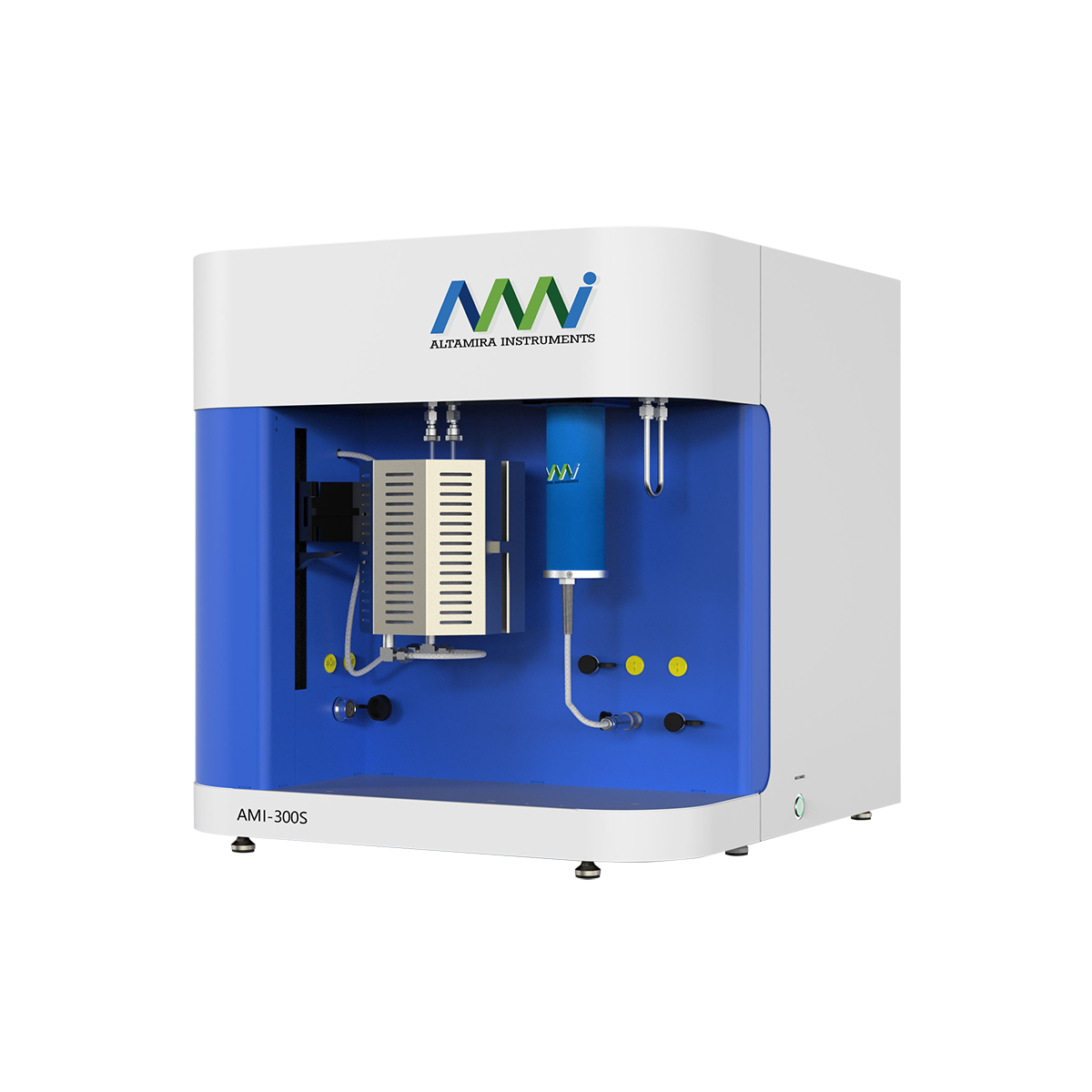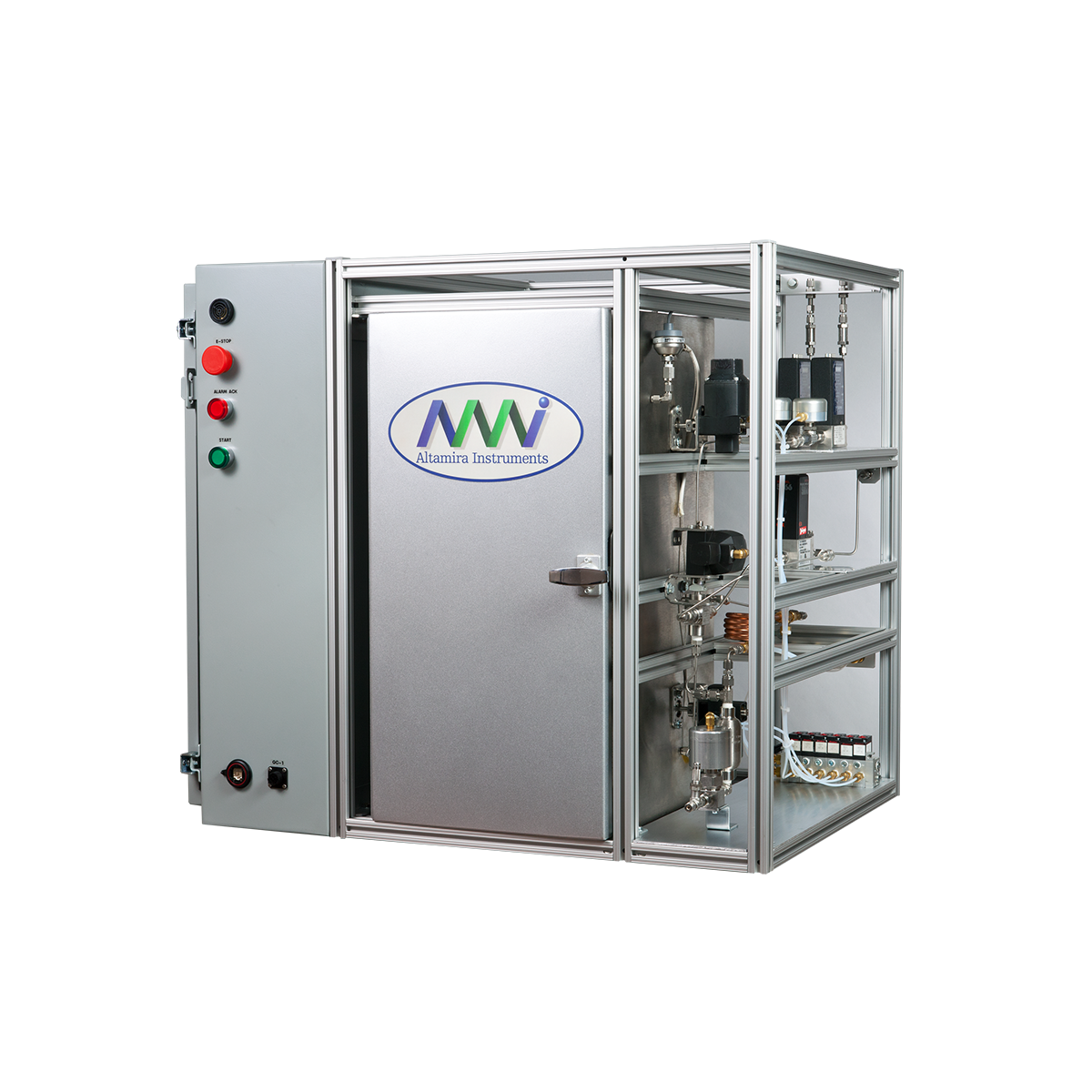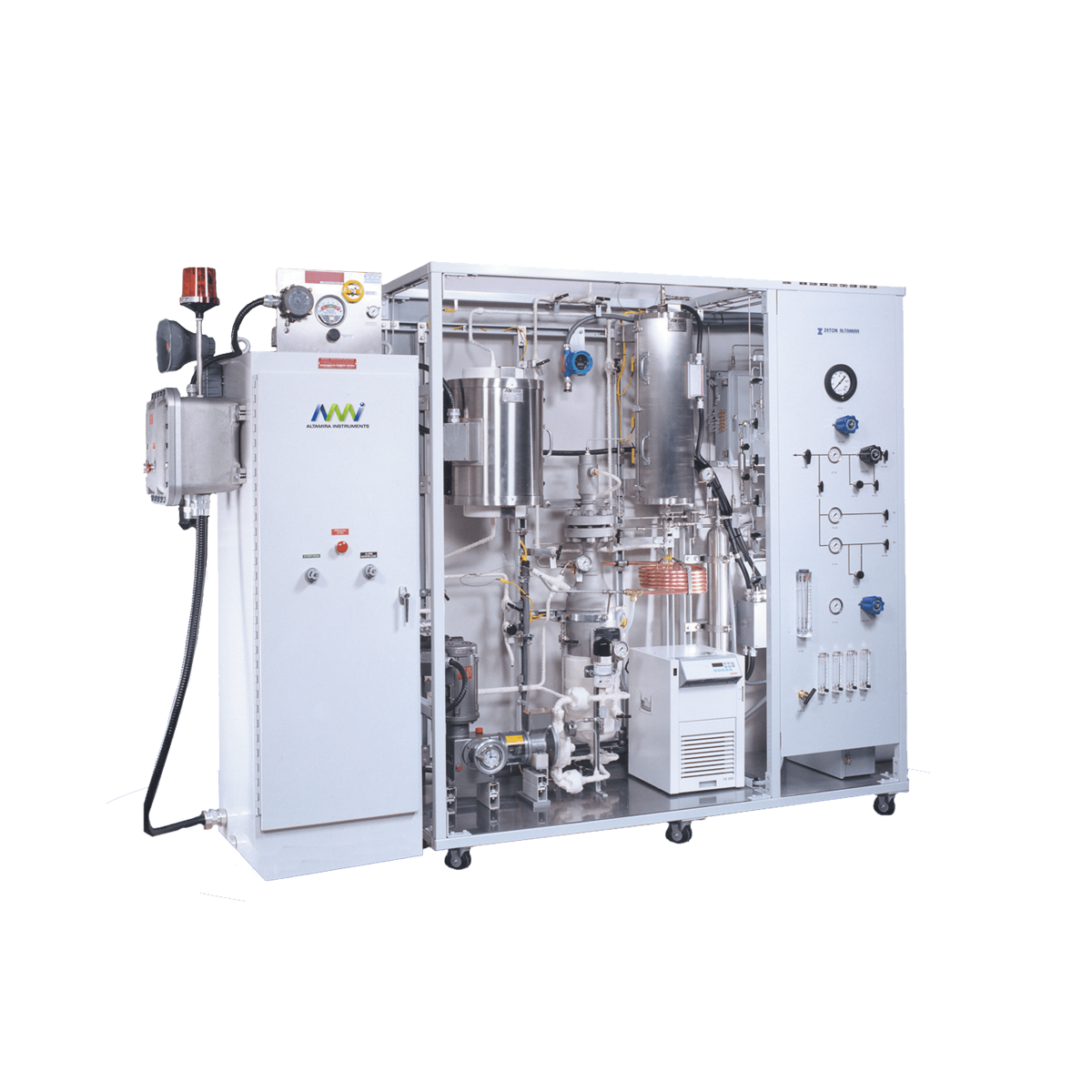Pulse Chemisorption
Pulse chemisorption was described in the March 1990 issue of Altamira Notes.1 Pulse chemisorption is ideally suited for catalyst-adsorbate combinations which have relatively fast adsorption kinetics, i.e. the adsorption process is not activated. For this comparison we have chosen two supported Pt catalysts with low metal loading: an ASTM standard catalyst having 0.5 wt% Pt on alumina, and an in-house 0.3 wt% Pt on alumina. Carbon monoxide was used as the adsorbate.
Hydrogen, CO, or in some cases oxygen, have been most commonly used for chemisorption measurements on Pt catalysts when using static (volumetric) techniques.2-5 In fact, ASTM has developed a standard test method for hydrogen chemisorption on Pt/AI2O3 catalysts (Test D 3908-88). However under dynamic conditions, the slow adsorption kinetics of the hydrogen on Pt makes it a marginal choice. On the other hand, the adsorption of CO on Pt is well known to be a fast process, making it an obvious choice for pulse chemisorption experiments.
Table 1 shows a comparison of the measured CO uptake on the two Pt catalysts as measured by both volumetric and pulse technique. The agreement between the two methods is excellent. It may be noted that the pulse method results in a slightly lower measured uptake, this may be due to some degree of weakly-held or "reversible" CO being measured by the volumetric method which will not be measured by the pulse method.
One advantage of the pulse method over volumetric method is the time required to conduct the test. After the pretreatment processes, which should be similar for both methods, a complete pulse chemisorption analysis typically takes less than 30 minutes, including system calibration. In contrast, a five-point volumetric measurement can easily take four hours or more to complete.
A second advantage of the pulse method is that its sensitivity can be easily improved by either using smaller pulsing loops or using diluted mixtures of the adsorbate in an appropriate inert gas. For example, a 10% mixture of CO in He can be used as the adsorbate instead of pure CO. This may increase slightly the time of the analysis, but yields better reproducibility.
Temperature-Programmed Desorption
Temperature-programmed desorption TPD) can be used in cases where the catalyst-adsorbate kinetics are not favorable for pulse chemisorption measurements (see Altamira Notes No. 19, Winter 1994)6 Cobalt metal is a case in point. For Supported cobalt catalysts, H2 chemisorption is slow at room temperature, but can be accelerated by slightly increasing the temperature of the sample to about 100°C.7 Carbon monoxide also chemisorbs slowly at room temperature and has the additional disadvantage of being able to disproportionate, at higher temperatures, via the Boudouart reaction,
2CO = C + CO2.
The hydrogen uptake of two cobalt catalysts were measured using both volumetric chemisorption and TPD. The catalysts consisted of 20 wt% Co supported on alumina. One catalyst also contained 0.5 wt% ruthenium as a reduction and dispersion promoter. Figure 1 shows the hydrogen TPD profiles of these catalysts. Both catalysts showed a broad desorption profile and, as expected, the Ru-containing catalyst exhibited a larger desorption signal. The critical parameters in obtaining these TPD results were the adsorption temperature and the adsorption time, 50°C and 30 minutes, respectively.
Table 2 compares the hydrogen uptake as measured by TPD and by a fivepoint volumetric method. Again, excellent agreement was observed.
As with pulse chemisorption, use of the TPD for measuring uptakes can result in significant time savings. Additionally, some qualitative insights can be gained from the temperature profile concerning the strength of the chemisorption.
Summary
It can be seen from these comparison that proper use of dynamic and static chemisorption methods lead to the same results. Dynamic methods have the advantages of simplicity and speed.
References
1. "Pulse Chemisorption", Altamira Notes, March 1990.
2. Wilson, G.R. and Hall, W.K.: J. Catal., 17, 190 (1970).
3. Satterfield. C.N.; “Heterogeneous Catalysts in Practice” , McGraw-Hill, NY (1980).
4. Lemaitre, J.L.; Menon, P.G., and Delannay, F.; “Characterization of Heterogeneous Catalyst” (F. Delannay, ed.) Marcel Dekker, N.Y. (1974).
5. Ferrauto,R.; AlChE Symposium Series, 70, 9 (1974)
6. "Conditions and Parameters for TPD Experiments: Supported Metal Catalysts", Altamira Notes, 19, Winter 1994.
7. Reuel, R.C. and Bartholomew, C.H., J. Catal., 85, 78 (1984).




